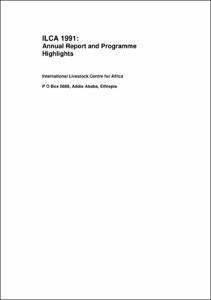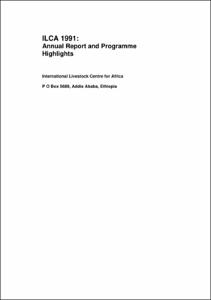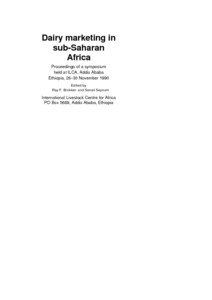Location
Vision, mission and strategy
ILRI's strategy 2013-2022 was approved in December 2012. It emerged from a wide processof consultation and engagement.
ILRI envisions... a world where all people have access to enough food and livelihood options to fulfil their potential.
ILRI’s mission is... to improve food and nutritional security and to reduce poverty in developing countries through research for efficient, safe and sustainable use of livestock—ensuring better lives through livestock.
ILRI’s three strategic objectives are:
- with partners, to develop, test, adapt and promote science-based practices that—being sustainable and scalable—achieve better lives through livestock.
- with partners,to provide compelling scientific evidence in ways that persuade decision-makers—from farms to boardrooms and parliaments—that smarter policies and bigger livestock investments can deliver significant socio-economic, health and environmental dividends to both poor nations and households.
- with partners,to increase capacity among ILRI’s key stakeholders to make better use of livestock science and investments for better lives through livestock.
This is ILRI’s second ten-year strategy. It incorporates a number of changes, many based on learning from the previous strategy (2000–2010, initially produced in 2000 and modified in 2002), an interim strategy (2011–2012) and an assessment of the external and internal environments in which the institute operates.
Members:
Resources
Displaying 1011 - 1015 of 1152ILCA. 1991: annual report and programme highlights
This report presents some of the highlights of ILCA's research and training and information programme. The highlight described for the Cattle Milk and Meat Thrust focuses on helping national agricultural research systems (NARS) make better use of their livestock production data. The highlights of both the Small Ruminant Meat and Milk Thrust and the Animal Traction Thrust center on crop-livestock integration, integrating forage legumes into the farming systems of the Sahel and the subhumid zone of West Africa. The traction thrust focuses on ILCA's work in the Ethiopian highlands.
ILCA. 1991: annual report and programme highlights
This report presents some of the highlights of ILCA's research and training and information programme. The highlight described for the Cattle Milk and Meat Thrust focuses on helping national agricultural research systems (NARS) make better use of their livestock production data. The highlights of both the Small Ruminant Meat and Milk Thrust and the Animal Traction Thrust center on crop-livestock integration, integrating forage legumes into the farming systems of the Sahel and the subhumid zone of West Africa. The traction thrust focuses on ILCA's work in the Ethiopian highlands.
General issues in impact assessment
This introductory paper raises general issues and poses questions that are pursued in the other papers. The initial premise of this paper is that impact cannot be discussed in isolation from the broader context of research and development and the overall priorities guiding the centres research, training, and networking activities.
Dairy marketing in sub-Saharan Africa. Proceedings of a symposium
The main aim of the symposium is to develop a comprehensive overview of what is already known about dairy marketing systems and policies in sub-Saharan Africa and to identify key research problems so as to facilitate a coordinated research effort among interested parties.





